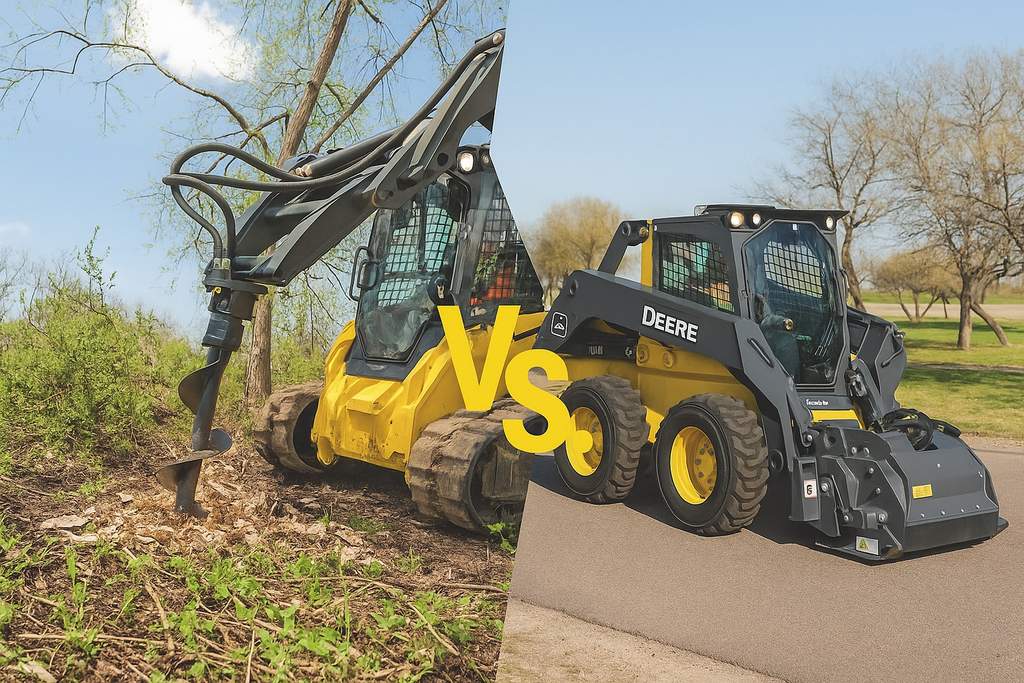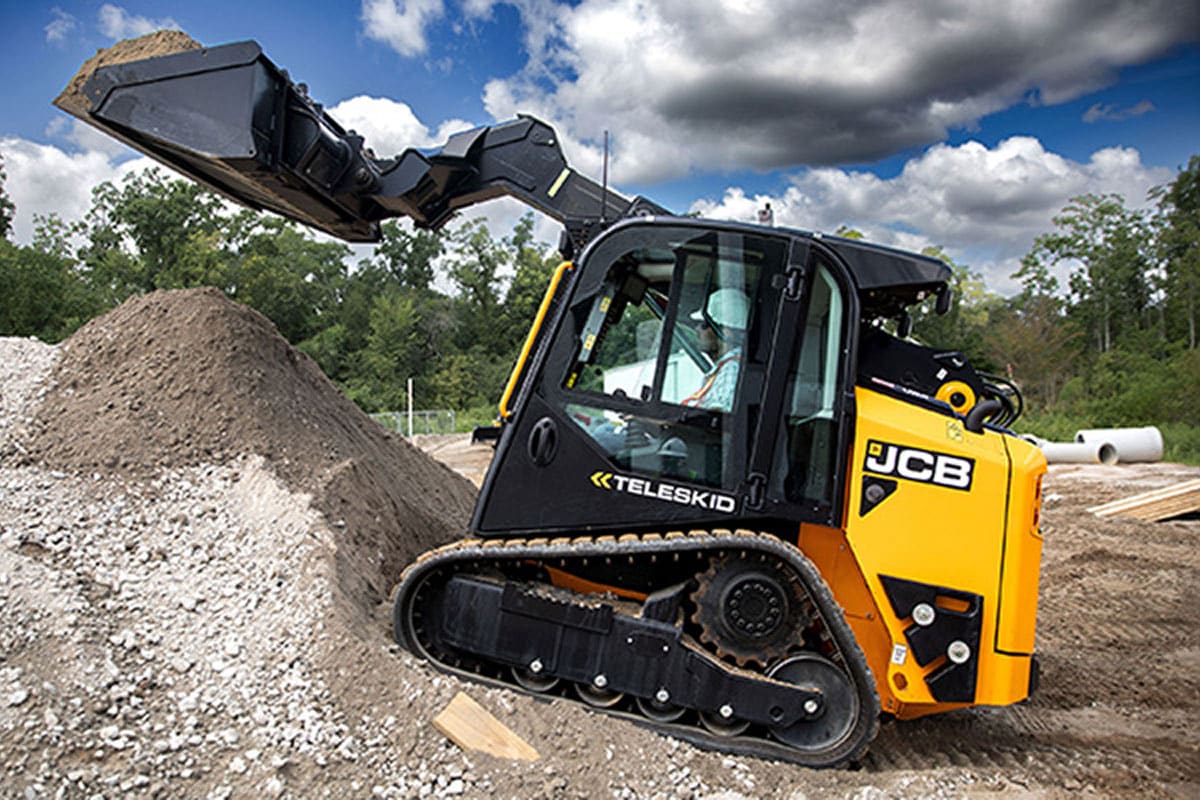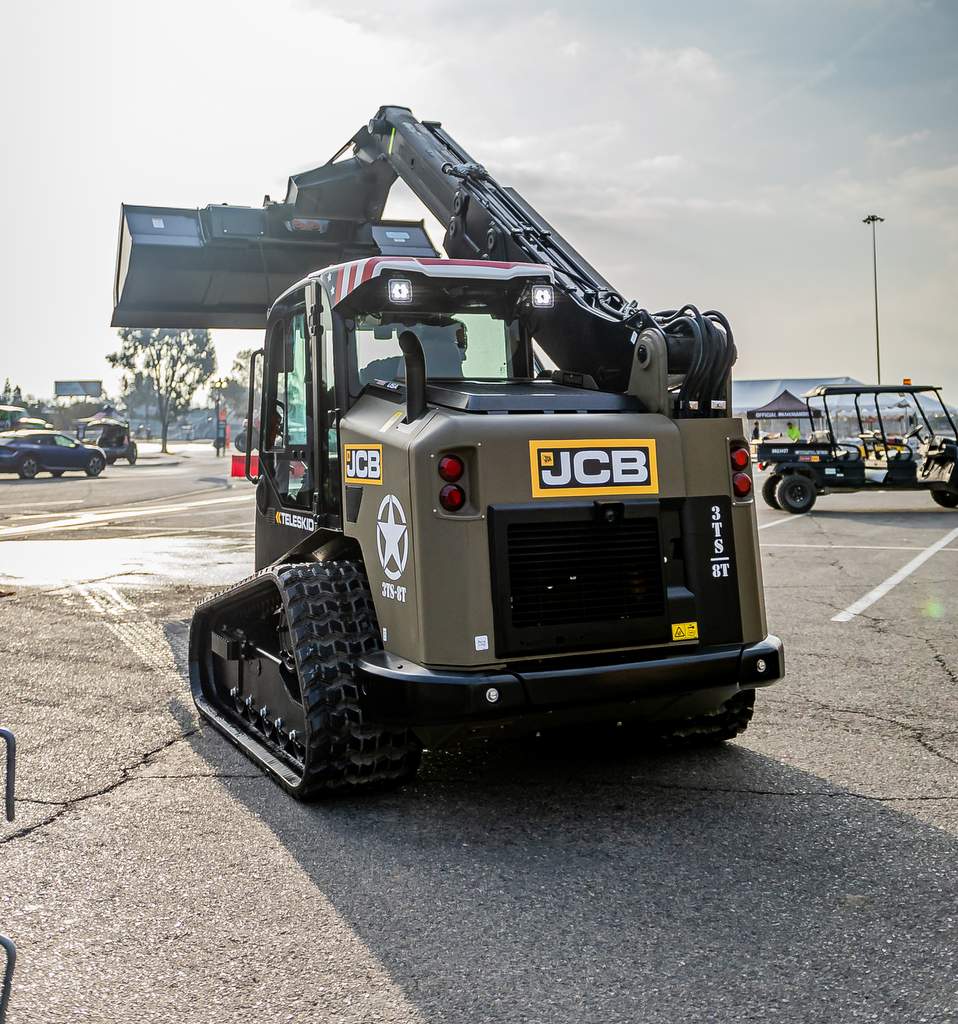JCB Track Loaders Summarized — 2019 Spec Guide

Five Side-Entry Loaders, Including the World’s First Telescoping Boom Unit
JCB entered the skid steer market in 1993 and began producing compact track loaders in 2001. In 2017, JCB revamped its model lineup to provide a full complement of large- and small-platform skid steers and compact track loaders, and in 2017 launched the all-new Teleskid compact track loader with a telescopic boom, offering greater lift, reach and dig depth than any compact track loader on the market. Today, JCB markets four large-platform track models (the 270T, 300T, 3TS-8T Teleskid and the forestry-specific 325T) and one small-platform machine (the 215T) for a total of five compact track loaders offering only vertical lift — a major change this year.
All JCB compact track loaders are compliant with Tier 4 Final regulations and are powered by JCB’s Tier 4 Final JCB Ecomax engine or JCB Diesel by Kohler engines that meet Tier 4 Final emissions standards without the need for exhaust aftertreatment, allowing greater fuel efficiency and reduced downtime and operating costs. The standard hydraulic circuit flow rate is 18.5 gpm on JCB small-platform compact track loaders and 24 gpm on large platform machines; a high-flow option, up to 33 gpm (depending on machine size), is available for maximum attachment versatility.
JCB compact track loaders feature the company’s iconic single arm Powerboom which is manufactured from 20 percent more steel than conventional twin booms and is guaranteed for the life of the JCB machine. The single arm design enables JCB’s wide-opening side door for safe entry and exit, eliminating the need for operators to climb over hazardous attachments or under an unsupported boom. The single boom design also enables 270 degrees of visibility from the operator’s seat, which is 60 percent better than conventional compact track loaders. And with no requirement for the rear torque tube found on conventional machines, operators benefit from excellent rear visibility.
JCB also says its compact track loaders offer considerably more space than conventional compact track loaders. The operator environment on large-platform JCB machines is 33 percent larger than the competition, while small-platform JCB skid steers offer 46 percent more room than competing machines, notes the company. JCB cabs also feature a handy storage space and 12-volt power socket for charging mobile phones and other devices, and air conditioning is an available option. JCB compact track loaders use three cab ventilation filters and an external panel cover. Additional features like suspension seats, servo controls, sealed and pressurized cabs and optional counterweight packages are available on some models, for increased rated operating capacity (ROC) to meet individual requirements. For more information, visit a local JCB dealer.
Advice to Buyers
“When purchasing a compact track loader, buyers should consider the manufacturer’s standard and optional features to ensure their machine is configured to meet their requirements,” says Chris Trampush, product manager for compact track loaders at JCB North America. “For example, a reversing fan is a common option on compact track loaders used for applications that create a lot of debris. The fan automatically reverses every 15 minutes to clear debris and dust from the cooling pack.”
[prettyPhoto title=”JCB Specs” link=”https://compactequip.com/wp-content/uploads/2019/07/jcb-track-loader-specs.jpg” type=”link” ]





